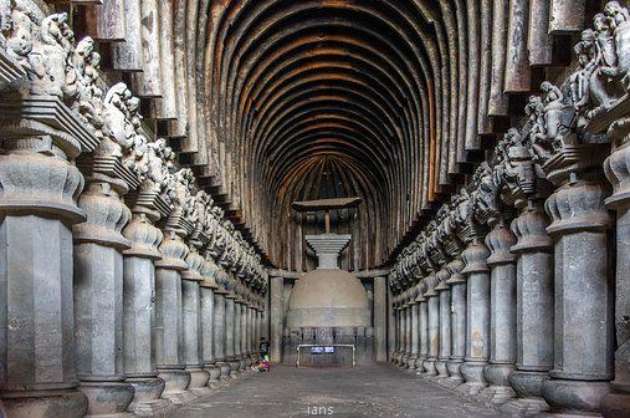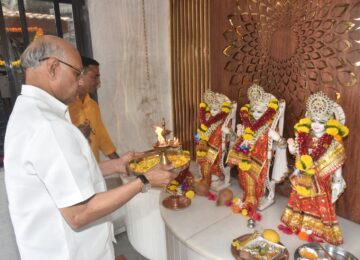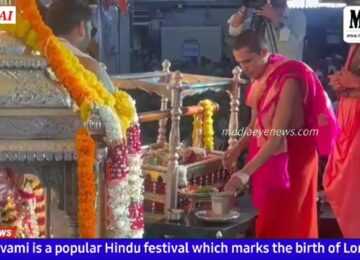Anupama Nair
www.mediaeyenews.com
It is a great news for India and Maharashtra. United Nations Educational, Scientific and Cultural Organization (UNESCO) has accepted the proposal for the Stone Age era ‘petroglyphs’ or ‘geoglyphs’ in the Konkan region as a ‘tentative nomination’. In a major boost for conservation and tourism, two sites from Maharashtra have made it to the tentative list for UNESCO’s prestigious world heritage site tag. The state is also working for a third nomination, an official in the government said. What is petroglyphs or geoglyphs? “Petroglyphs are made by scratching, rubbing, or chipping at rock surfaces. Pictographs are painted rock surfaces. Geoglyphs are larger, ground markings made usually by trenching or clearing away rocks and the top layer of soil, in patterns or lines that stand out from the natural surface”.
These sites are located at Jambhrun, Ukshi, Kasheli, Rundhetali, Devi Hasol, Devache Gothane, Kudopi in Maharashtra and Phansaymal in Goa. The state’s nomination for the ‘Maratha Military Architecture in Maharashtra’ is already on this list. Work is underway for a third proposal featuring the state’s famed sea forts. If accepted as World Heritage Sites, these locations will be in the same league as the Stonehenge in the United Kingdom, Vatican City, Taj Mahal at Agra and the Red Fort complex in Delhi.
India has 40 World Heritage Sites and those in Maharashtra include the Ajanta caves, Ellora caves, Elephanta caves, Western Ghats, the CSMT railway station complex in Mumbai, and Victorian Gothic and Art Deco ensembles along Marine Drive in south Mumbai. The tag helps boost conservation and protection of these monuments and drives international tourist traffic.
“We are working on three such proposals for the first time,” said an official from the Museums and Archaeology, Government of Maharashtra. “This will deepen the cultural projection of Maharashtra on the international scene”. On March 25, UNESCO added Maharashtra’s nomination for ‘Geoglyphs clusters in the Konkan region, south-western Maharashtra and Goa’ in the tentative list. These geoglyphs are estimated to have been carved out in laterite rock by pre-historic humans in the period between 20,000 BC (Mesolithic era) to 2,000 BC (early historic). The nomination was submitted to UNESCO in 2020 and the agency had raised certain queries regarding the protection status of these sites. These have been answered, leading to the nomination being accepted tentatively.
The state government will submit a dossier to UNESCO via the Archaeological Survey of India (ASI) and the Union Ministry of Culture with details of the history, features, and conservation strategy, and justify how this theme fits into the criteria for being declared a world heritage site. The process for appointing a consultant for the project will begin soon. UNESCO’s experts will then visit these sites after which the citation will be awarded.
The geoglyphs in the coastal area of Konkan are the only material and cultural remains that point to the pre-historic human activities in the Konkan region. The large concentration of geoglyphs on the laterite plateaus (referred to as ‘sada’ in local terminology) in the Konkan region is the most remarkable open-air ensemble of pre-historic human expression of rock art in the region.
Maharashtra has 72 recorded sites of such geoglyphs, with over 1,600 carvings.
In 2021, the directorate had submitted a nomination for the ‘Maratha Military Architecture in Maharashtra,’ including 14 forts, — Raigad, Rajgad, Shivneri, Torna, Lohagad, Salher, Mulher, Rangana or Panhala, Ankai-Tankai, Kasa, Sindhudurg, Alibag, Suvarnadurg and Khanderi. The tentative nomination for this project was accepted last year. The Government had recommended the appointment of a consultant to prepare a report on the military architecture of the forts. Fortifications in the Indian Sub-continent first appeared probably in the form of the Harappan settlements. These were perimeter walls to define and defend human settlements.
The forts of Western India have played a significant role in the political and architectural history of the region. The best use of these fortifications and application of guerilla warfare was started by Chhatrapati Shivaji Maharaj, who challenged the Mughals and laid the foundation of the Maratha empire, which became the pre-dominant power in India before being destroyed by the British. The directorate had selected 14 forts based on their overall appeal and their unique historic value. Maharashtra is perhaps the only state in the country to have all types of fort architecture — land, sea and hill forts.
The consultant will draft a nomination proposal for the sea forts, which will include components like the site management plan, development of sustainable tourist facilities, and conservation and protection interventions. This list will include the 11 forts of Vasai, Madh, Underi, Revdanda, Korlai, Janjira, Bankot, Anjanvel, Jaigad, Purnagad, Yashwantgad and Arnala. The report for the military architecture and proposals will be prepared in 14 months after the appointment of the consultants. “Being inscribed on the World Heritage List is prestigious. It boosts tourist traffic and conservation, and develops the larger area. The study and research in these subjects gets a boost,” said an official of the archaeological department.
“The world heritage tag would bring global recognition and international tourists to Konkan, and consequently, boost development. The benefits of this status are many including interest among academics and research by international experts, and
the locals will stand to benefit due to a rise in tourism, which will promote sales of local products. The rich cultural traditions of Konkan will be presented before the world”.
What are the criteria to win a UNESCO Heritage Site award?
- “Masterpiece of human creative genius
- Exhibit of an important interchange of human values, over a span of time or within a cultural area
- Unique testimony to a cultural tradition or to a living or disappeared civilization
- Outstanding example of a type of building, architectural or technological ensemble or landscape
- Outstanding example of a traditional human settlement, land-use, or sea-use
- Association with events or living traditions, ideas, beliefs, artistic and literary works of outstanding universal significance
- Contain superlative natural phenomena or areas of exceptional natural beauty and aesthetic importance
- Outstanding examples representing major stages of earth’s history
- Outstanding examples of significant on-going ecological and biological processes
- Contain the most important and significant natural habitats for in-situ conservation of biological diversity, including threatened species”.
It is a matter of great pride that the Indian Sub-continent has many sites featuring in the list.




























